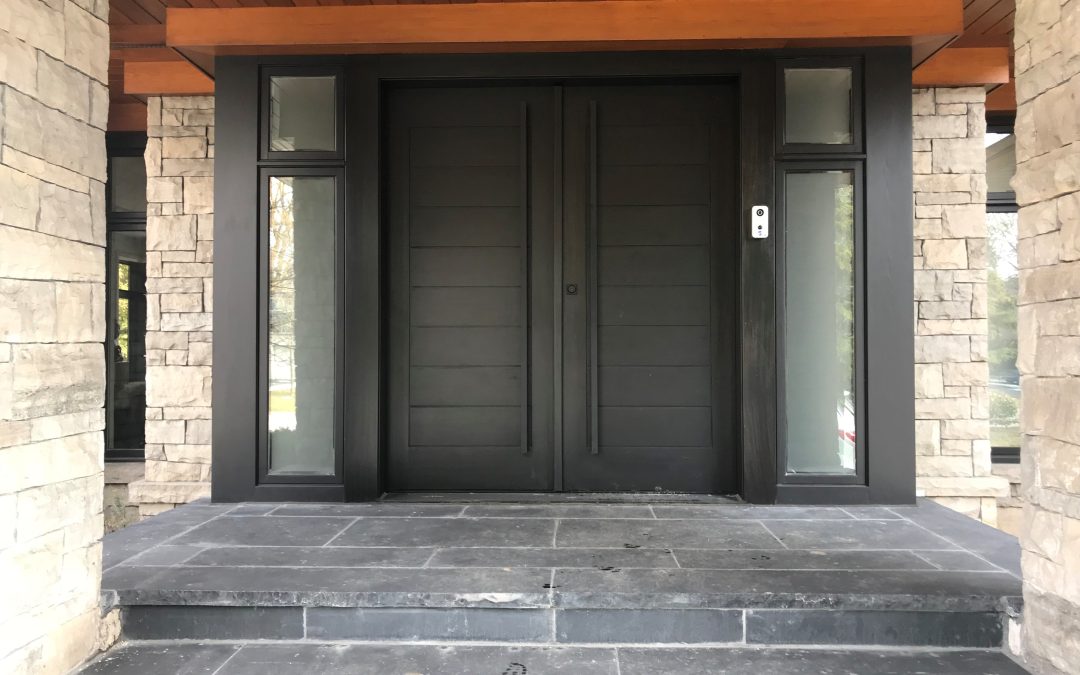When selecting exterior wood doors, the possibilities for customization are limitless. Various wood cuts, for instance, have the potential to significantly alter the appearance and aesthetic of a door. By modifying the cut, in combination with the veneer species, stain, and other selections, you can personalize wood doors to achieve a distinct look and atmosphere for your project.
In this blog, our team at Master Doors, a door manufacturer in Canada, explores the different wood cut options to help you determine which will best suit your desired aesthetic in your upcoming project.
Wood Cuts for Exterior Doors
Wood is valued as a building material for its natural origin, with each tree possessing its own distinct characteristics. Its versatility allows it to be transformed into both functional and artistic pieces, such as architectural doors.
Creating with wood requires a grasp of the unique traits of each species and the application of creative insight into its potential appearance. The technique used to cut wood influences the resulting grain pattern and overall consistency of the finished item.
Types of Wood Cuts That Door Manufacturers Use
Flat Cut
A cost-effective option commonly used for exterior doors is plain slicing, which results in straighter grains and a consistent appearance. Also referred to as flat cut, plain sliced veneer is the preferred cutting method requested by many of our clients. This method maximizes the number of slices obtained from each piece of wood compared to more intricate cuts. Flat cut wood often exhibits a cathedral pattern, characterized by rows of arch-shaped markings along its length.
Rift Cut
Due to its coarse grain texture, both red and white oak are capable of absorbing stain effectively, although white oak typically exhibits longer grain patterns. Additionally, oak contains medullary rays, natural vein-like structures that radiate across the tree’s rings, resulting in a reflective appearance known as the “flake effect.” This effect becomes particularly pronounced when oak wood veneer doors are exposed to direct sunlight.
A rift cut, made at a 15-degree angle to the radial, minimizes the “flake effect” inherent in quarter-cut oak, emphasizing the vertical grain instead. While the contrast is subtle, oak can also be cut using a combination of rift and quarter cuts to achieve desired results.
Quarter Cut
To produce quarter-cut wood veneers, a log is initially divided into quarters, followed by cutting layers from each section. This method results in a tight vertical grain, often preferred by many clients for its consistent appearance. Unlike plain-sliced veneers, quarter-cut veneers eliminate arches or cathedral-like patterns. However, it’s worth noting that oak species cut using this method may exhibit a “flake effect,” characterized by a shiny appearance.
Staining Wood Doors by Manufacturers
Having wood doors stained by door manufacturers offers the opportunity to tailor colour results while providing added protection. Opting for this professional stain assists in maintaining colour uniformity throughout a project. Nonetheless, it’s important to consider how the veneer wood’s cut influences the staining outcome. For instance, flat cut or plain sliced wood may not absorb stains as effectively as other cuts. It’s essential to consult with a door manufacturer, such as our team at Master Doors, to assess the specific requirements of your project, as each door varied results based on wood species and cut.
Contact Our Door Manufactures for Quality Wooden Doors!
At Master Doors, we offer an extensive array of custom wooden exterior doors. From modern to traditional, we carry a variety of styles to suit your requirements and preferences.
Get in touch with our door manufacturers today for a quote!



